
Old Seoul Station - Seoul, Korea
Posted by:  silverquill
silverquill
N 37° 33.324 E 126° 58.421
52S E 321016 N 4158417
Seoul Station was completed in 1925 by the occupying Japanese Imperial Forces, during the years of brutal oppression. Tsukamoto Yasushi also designed Tokyo Station, which this resembles. A new, modern station is adjacent, and this will be a museum.
Waymark Code: WM6N00
Location: Seoul, South Korea
Date Posted: 06/23/2009
Views: 7
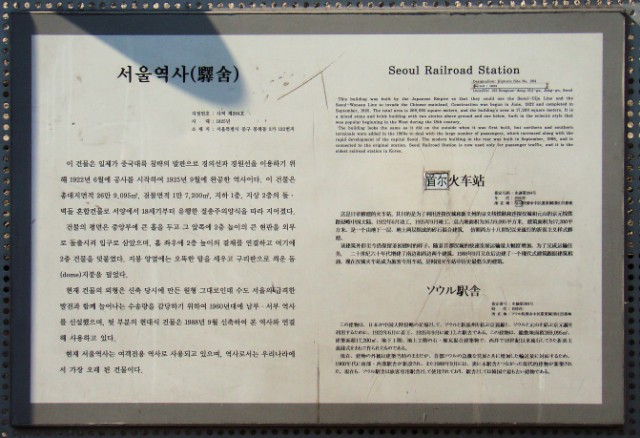
Text of the historical marker:
SEOUL RAILROAD STATION
Designation: Historical Stie No. 284
Period: Japanese Colonial Period, 1925
Location: 122 Bongnae-dong 2 (i)-ga, Jung-gu, Seoul
This building was built by the Japanese Empire so that they could use the Seoul-Uiju Line and the Seoul-Wonsan Line to invade the Chinese mainland. Construction was begun in June, 1922 and completed in September, 1925. The total area is 269,095 square meters, and the building's area is 17,200 square meters. It is mixed stone and brick building two stories above ground and own below, built in the eclectic style that was popular beginning in the west during the 18th century. The building looks the same as it did on the outside when it was first built, but northern and southern terminals were added in the 1960s to deal with the large number of passengers, which increased along with the rapid development of the capital Seoul
The modern building in the rear was built in September 1988, and is connected to with the original station. Seoul Railroad Station is now used only for passenger traffic, and it is the oldest railroad station in Korea.
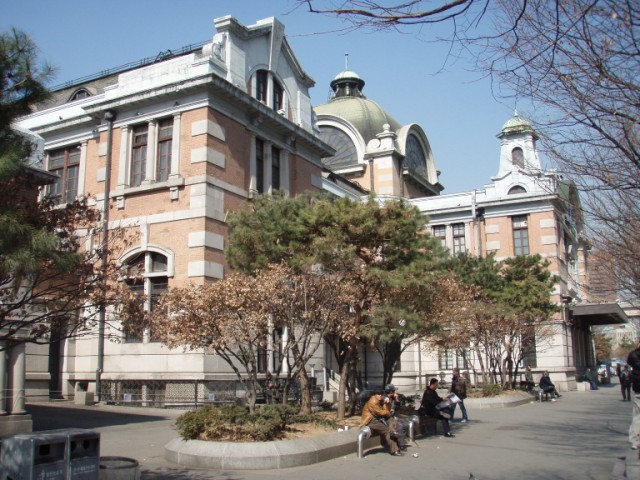
From the
Seoul News
The old Seoul Station, which opened in 1925, was designed by Professor Tsukamoto Yasushi of Tokyo Imperial University during the Japanese annexation of Korea (1910-45). It was partly built for military purposes, to help the Japanese Imperial Army to advance farther to the North to China and other regions. Korea’s first railway, from Noryangjin (just south of the Han River from downtown Seoul) to Incheon (then called Jemulpo) began service in 1899. The first railway bridge over the Han River was completed in 1900. Construction on Seoul Station began in 1923 to replace the smaller station at Namdaemun.
The first floor of Seoul Station served as a waiting room while the second floor was reserved for VIPs and a western-style restaurant and the basement was used for station offices. The first floor was made up of a large hall in the center with a Byzantine-style dome forming the upper roof. Sunlight flows in through the arched window above.
Seoul News
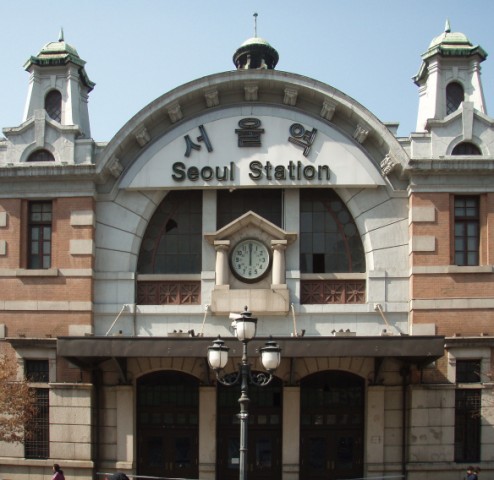
The front Diocletian window. The Diocletian window — a semicircular window divided into three parts by two vertical mullions — takes its name from the Baths of Diocletian in Rome, and are a common feature in Palladian architecture.
Text from The Marmot's Hole Seoul Station and Its Environs
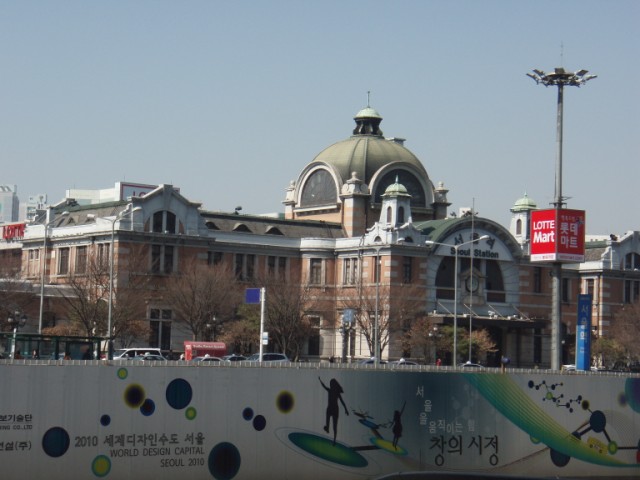
Rail service came to Korea in 1899 with the opening of the Noryangjin-Incheon line. With the opening of the Hangang Railway Bridge in 1900, Seoul proper was linked up to Incheon, with Seoul’s first station being built in Seodaemun. In 1904, the Seoul-Busan line opened, and a new main terminal was built in Namdaemun. At this point, rapid rail development — and the growing war in China — necessitated a larger train station, so in June 1922, work began on the grand Keijo (Seoul) Station. Construction was completed in 1925.
Seoul Station was designed in Palladian fashion by Tokyo Imperial University professor Tsukamoto Yasushi, a student of Tatsuno Kingo, the man who designed Tokyo Station (and in Korea, the former headquarters of the Bank of Korea in Myeongdong). Seoul Station is supposedly modeled on Tokyo Station, which in turn is “rumored” to be modeled on Amsterdam Centraal Station, which would make Seoul Station a copy of a copy. Regardless, it’s a beautiful piece of Renaissance-style architecture, with its ornate decorations, Byzantine dome, Diocletian windows and rusticated lower floor.
Text From The Marmot's Hole Seoul Station and Its Environs
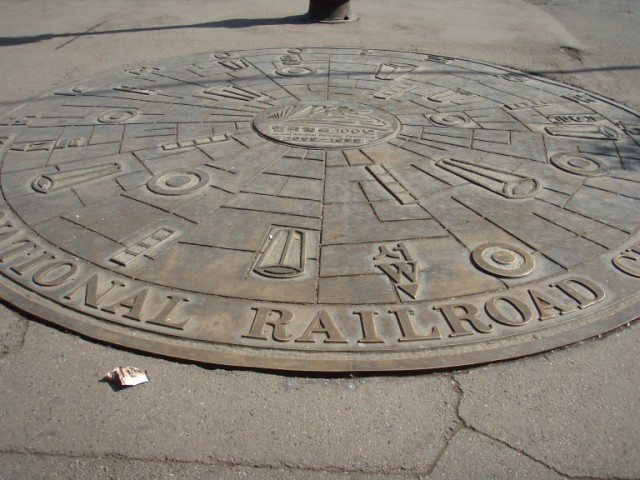
This compass rose was installed in front of the Old Seoul Station to celebrate the Korea National Railroad Centennial in 1999.